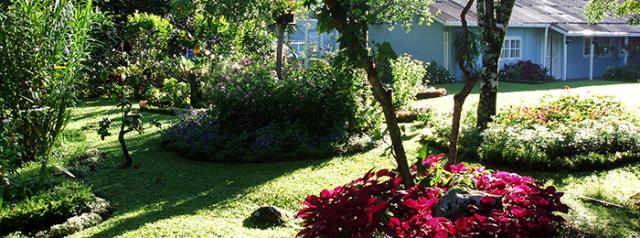The Holbrook Explorer

Environmentally Friendly Projects for a "Greener" Backyard
Environmentally Friendly Projects for a "Greener" Backyard
If you’re looking for a fun and ecofriendly project to try at home, look no further than your own backyard. Whether you have a sizeable garden, a modest patio or balcony, or even an urban apartment, there are lots of ways you can help wildlife, conserve resources, and give new life to old items.

Give your garden a makeover
- Make your yard pollinator-friendly
Pollinators like hummingbirds, bees, butterflies, beetles, and even bats play an essential role in maintaining healthy ecosystems and ensuring the survival of our crops. Offer up colorful, native flowers and other plants to attract a variety of visitors. Audubon’s Native Plants Database is an easy way to create a personalized list of native plants based on your zip code, and the Monarch Watch Milkweed Market helps ensure the milkweeds you purchase are native to your ecoregion. Choose plant that flower at different times to provide nectar throughout the season, and avoid or limit pesticide use.
- Try xeriscaping
When you hear the word xeriscaping, you may think of cactus and gravel, but you don’t have to live in a desert to give this landscaping method a try. Instead, it’s all about choosing native, drought-resistant vegetation that’s suited to thrive in your natural climate, thereby reducing the need for added irrigation. In addition to a lower water bill, xeriscaped spaces require less mowing and other maintenance over the long term. You don’t have to overhaul your entire yard at once – start small, tackling a section you can finish in a few hours or a weekend.
- Get your backyard Wildlife Habitat Certified
This program by the National Wildlife Federation lets you certify your garden as a wildlife habitat if you meet certain criteria. To become wildlife-certified, your garden must provide food, water, shelter, and places for wildlife to raise their young, and must employ sustainable practices. You can even certify your balcony container garden, schoolyard, work landscape, or roadside greenspace. Learn more about the program here.
 Photo by Sanford M. Sorkin
Photo by Sanford M. Sorkin
Get hands-on with a DIY project
- Make a biodegradable bird feeder
If you have little ones at home, a classic pinecone-and-peanut-butter feeder is an easy project for almost any age. (If you don’t have pinecones available, then stale – but not moldy – bread or the cardboard tube from an empty toilet paper roll work just as well.) Slightly older kids can try their hand at baking bird seed cookies. For an even easier option, cut an orange in half and affix it to a branch or post to attract orioles, or string together dried or fresh berries and other bird-friendly treats using twine or yarn.
- Hang a bat house
Bats provide natural pest control – one bat can eat upwards of 6,000 mosquitos and other insects in one night – and while they typically roost in caves or hollow trees, a well-placed bat house offers additional shelter. Bat houses are commercially available, or you can build one yourself. (While the incidence of rabies in bats is only about 1%, you should still practice precautions. Don’t handle bats with bare hands, warn children not to handle bats, and make sure pets are up-to-date on vaccinations.)
- Set up a bird bath
Birds rely on clean water not only for drinking but also for keeping their feathers clean and parasite-free. Select a shallow container and put some stones or pebbles in the bottom to give birds something with grip to stand on. Find a spot that’s shady, sheltered from predators, and at least a few feet away from windows to prevent collisions. Make sure to clean your bird bath regularly.
Reuse, reduce, repurpose
- Start composting
Turning your leftover kitchen scraps, lawn clippings, dead leaves, and other organic material into compost is a great way to add nutrients to your soil and reduce methane emissions from landfills. With so much information available, getting started may feel intimidating, but it doesn’t have to be complicated. At the simpler end of the spectrum, you can designate a small section of yard for a freestanding pit or pile and just start adding to it, or enclose an area with fencing or chicken wire. But you can also find lots of different types of bins, depending on your needs, and you can even compost indoors if you don’t have a yard.
- Decorate with upcycled materials
Before pitching empty food containers, broken household items, or other trash, ask yourself whether they could be upcycled to add visual appeal to your outdoor space. Get creative! Make a wind chime out of orphaned silverware, old keys, or tin cans. Convert chipped teacups, worn-out shoes, or a defunct musical instrument into colorful garden planters. Use colorful glass bottles to make a bottle tree, or turn a plastic food container into a toad abode. The possibilities are endless!
- Re-use your rain
Set up a rain barrel to capture rainwater, which you can to reuse later to water your lawn or plants, for composting, or even for washing your car. You can purchase a premade barrel at home improvement stores or online, or you can make your own. Add a fine-mesh screen over the top to discourage mosquitos from breeding in the water, and keep the water out of direct sunlight to prevent algae growth. (Note: A few states have specific laws against collecting rainwater, while other places offer financial incentives for using rain barrels; it’s best to check your local statutes.)

